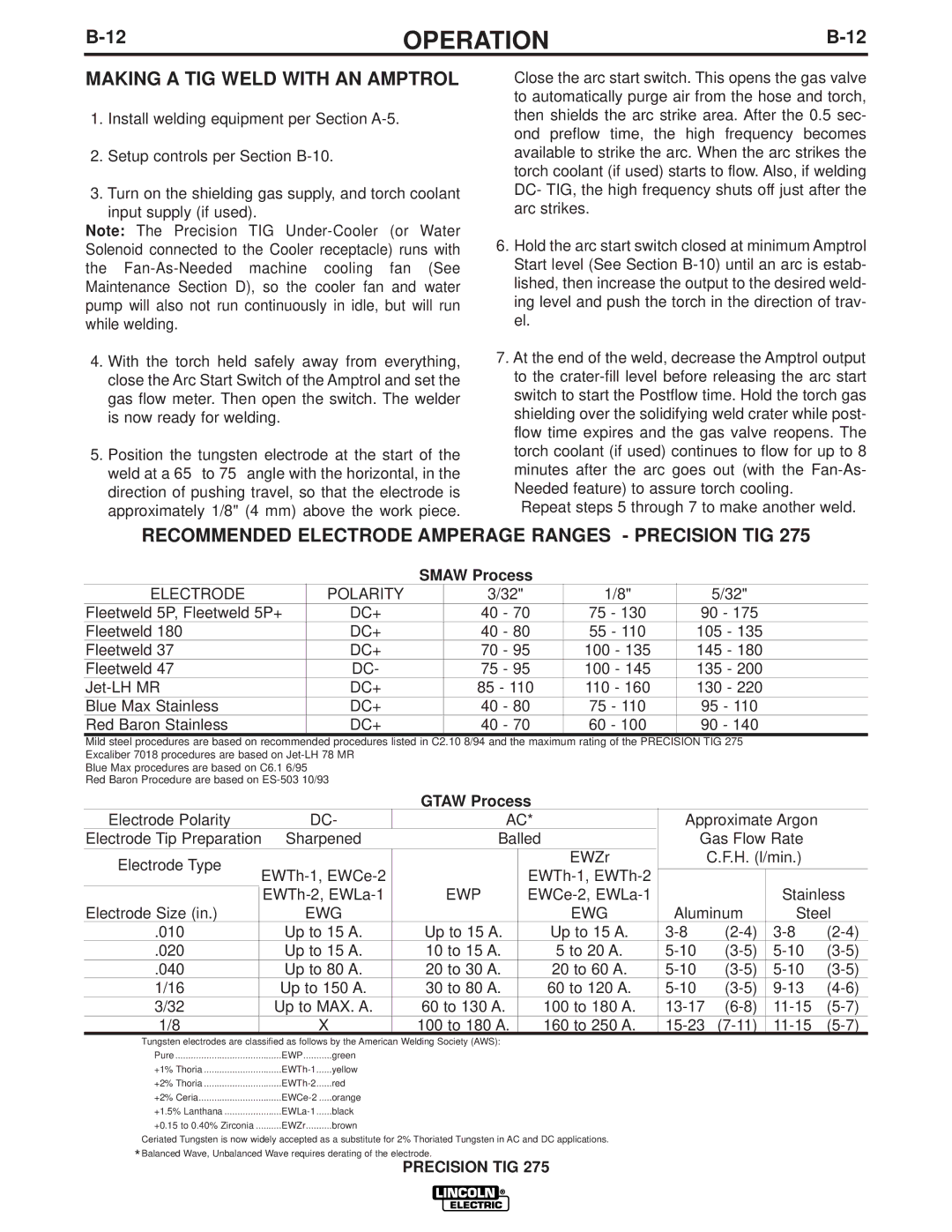IM702-A specifications
The Lincoln Electric IM702-A is a versatile and innovative welding machine that has garnered attention for its advanced features and robust performance. Designed for various welding applications, the IM702-A is a go-to choice for professionals in the industry, offering precision, reliability, and ease of use.One of the standout characteristics of the IM702-A is its advanced inverter technology. This allows for a lightweight and compact design, making it easier to maneuver in tight spaces compared to traditional welding machines. The inverter technology also contributes to energy efficiency, reducing power consumption without compromising on performance.
The IM702-A features a multi-process capability, enabling it to perform MIG, TIG, and Stick welding with ease. This versatility makes it ideal for a wide range of projects, from industrial manufacturing to home repairs. Users can seamlessly switch between different welding processes, enhancing productivity and streamlining workflow.
In terms of user interface, the Lincoln Electric IM702-A is designed with convenience in mind. It boasts a digital display that provides real-time information on welding parameters, making it easier for operators to monitor and adjust settings as needed. The intuitive controls are user-friendly, allowing even novice welders to achieve professional-quality results.
The machine also includes advanced weld control features, such as precise amperage and voltage adjustments. These controls ensure that users can achieve optimal settings for different materials and thicknesses, resulting in clean, strong welds. Additionally, the IM702-A is equipped with an automatic voltage adjustment feature, which helps maintain consistent performance under varying input conditions.
Durability is another key selling point for the IM702-A. Built with high-quality materials and engineering, this welding machine is designed to withstand the rigors of daily use in demanding environments. Its rugged construction provides reliability and longevity, ensuring that it remains a valuable asset in any workshop.
Lastly, safety is a priority in the design of the IM702-A. It includes several built-in safety features, such as thermal overload protection and a stabilized arc performance that reduces the risk of arc blow, protecting both the operator and the equipment.
Overall, the Lincoln Electric IM702-A stands out in the welding market due to its advanced technologies, multi-process capabilities, user-friendly interface, and robust safety features, making it an excellent choice for professional welders seeking high-quality performance and versatility.
